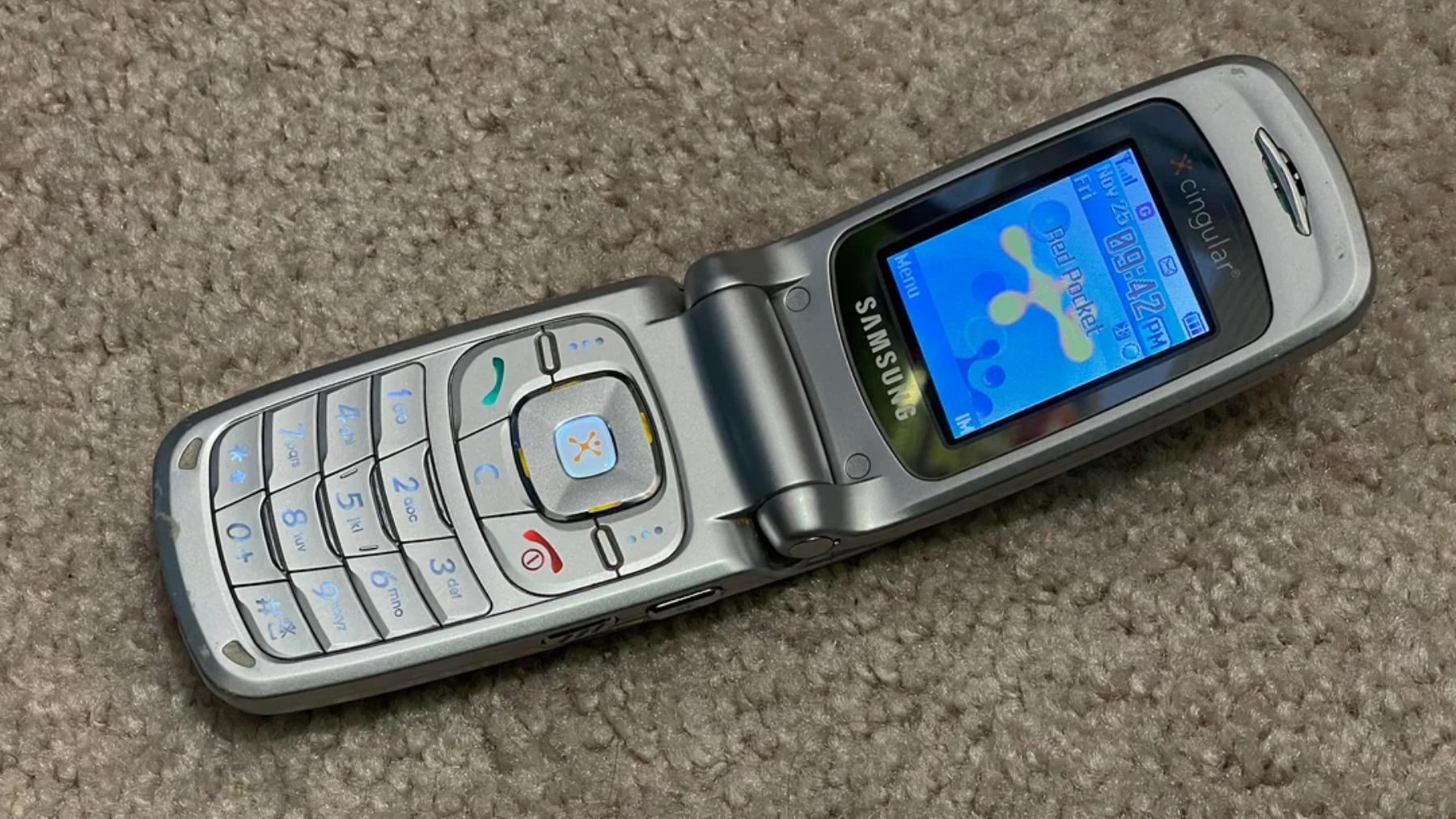In 2004, America was still thumbing T9 messages on clamshell handsets, and every mall kiosk rang with the satisfying snap of plastic lids. Into that noise Samsung dropped the SGH-P510, a chunky silver flip phone with a side key that did the flipping for you. Press and hold, and a tiny motor sprang the top half open; press again and it slammed shut with a whirring click. It felt like Star Trek in your pocket—and it instantly became a problem for retail clerks.
The magic key that sold itself
The P510’s party trick was delightfully pointless. At 92 grams it wasn’t heavy, but the 24 millimeter shell hid a hinge-drive powerful enough to swing the lid through its full arc. Samsung marketed the feature as an “automatic folder”, a name only engineers could love, but customers didn’t need a catchy label.
Shoppers saw movement, heard the muted servo whine, and started pressing. GadgetSpeak’s 2004 reviewer joked that the button catered to “the couch-potato brigade,” marvelling that Samsung had motorised “a task that can hardly be considered strenuous”.
When curiosity turns to chaos
In Germany the curiosity got out of hand. Nils Raettig, then a student working the phone counter at Saturn(now MediaMarkt) in Lünen, recalls schoolkids lining up every lunch break just to hammer the P510’s button. They weren’t buying; they were fidgeting. The hinge cycled so often the display model risked burning out, so the staff yanked the battery to give the poor thing a rest.
The phone still sold (shipments vanished as soon as they arrived) but the episode became a retail legend: the only handset so addictive it had to be powered down.
Specs that meant something in 2004
The rest of the device was solid mid-tier fare:
- Displays: 1.8-inch 65 k-color TFT inside; tiny blue OLED clock window outside.
- Camera: VGA (0.3 MP) with LED flash—grainy but passable for Myspace.
- Storage: 4 MB for photos, 1.4 MB for MMS, plus 512 KB for Java games.
- Battery: 1 000 mAh removable pack rated for five hours’ talk or 310 hours standby.
- Footprint: 84 × 45 × 23.5 mm; thicker than two modern Z Flips stacked together.
At launch the phone cost roughly £229 on pay-as-you-go in the U.K., translating to about $350 before subsidies —a steep ask for the era.
Why the motor stopped spinning
The P510’s launch timing was dreadful. Barely three months later Motorola unveiled the RAZR V3, slicing the clamshell world in half… literally. At 13.9 mm closed, the RAZR made the P510 look like a deck of cards. Carriers pushed the slimmer, anodised Motorola, and Samsung’s motorised marvel faded into niche memory. Moving parts added cost, weight, and one more thing to break; by 2005 Samsung had retired the mechanism.
Fast-forward two decades and Samsung is king of another folding frontier. The Galaxy Z Flip6 still obeys a thumb flick, not a motor, but the company’s obsession with tactile drama remains.
The old auto-flip foreshadowed the modern race to perfect hinge feel, crease depth, and that irresistible thunk when a foldable snaps shut. Engineers now chase reliability targets—200 000 folds, not 200 kids pressing a button for fun—but the emotional goal is unchanged: make opening a phone feel cool.
Because the P510 sold in limited markets it’s now a niche collectible. eBay listings hover around €100, often labelled “fully motorised, rare”. TikTok creators farm ASMR views by looping the open-close action under retro beats. The hinge still works on many units; motor failure wasn’t as common as critics feared. That resilience adds to the nostalgia —proof that sometimes over-engineered toys outlast trends.
Samsung built a phone that made people grin, then forced retailers to pull its battery so the fun wouldn’t break it. Yet the idea pushed the envelope of what a handset could feel like, and that spirit echoes in every modern foldable. So here’s to the loud little button that caused a ruckus 20 years ago. It may have died young, but it proved one thing: sometimes the smallest gimmick can flip the whole room open.


